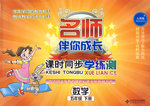题目内容
【题目】You are the collector in the gallery of your life. You collect. You might not mean to but you do. One out of three people collects tangible(有形的)things such as cats, photos and noisy toys.
There are among some 40 collections that are being shown at “The Museum Of”—the first of several new museums which, over the next two years, will exhibit the objects accumulated by unknown collectors. In doing so, they will promote a popular culture of museums, not what museums normally represent.
Some of the collections are fairly common—records, model houses. Others are strangely beautiful—branches that have fallen from tree, for example. But they all reveal (显露)a lot of things: ask someone what they collect and their answers will tell you who they are.
Others on the way include “The museum of Collectors” and “The Museum of Me”. These new ones, it is hoped, will build on the success of “The Museum Of”. The thinkers behind the project want to explore why people collect, and what it means to do so. They hope that visitors who may not have considered themselves collectors will begin to see they, too, collect.
Some collectors say they started or stopped making collections at important point: the beginning or end of adolescence—“it’s a growing-up thing; you stop when you grow up,”says one. Other painful times are mentioned, such as the end of a relationship. For time and life can seem so uncontrollable that a steady serial(顺序排列的)arrangement is comforting.
【1】How will the new museums promote a popular culture of museums?
A. By collecting more tangible things.
B. By showing what ordinary people have collected.
C. By correcting what museums normally represent.
D. By accumulating 40 collections two years from now.
【2】What can be learned about collectors from their collections?
A. Who they are.
B. How old they are.
C. Where they were born.
D. Why they might not mean to collect.
【3】Which of the following is an aim of the new museums?
A. To help people sell their collections.
B. To encourage more people to collect.
C. To study the significance of collecting.
D. To find out why people visit museums.
【4】According to the last paragraph, people may stop collecting when they
A. become adults
B. feel happy with life
C. are ready for a relationship
D. feel time to he uncontrollable
【答案】
【小题1】B
【小题2】A
【小题3】C
【小题4】A
【解析】
试题分析:文章介绍一些新博物馆,收藏的是普通人的收藏品,他们这么做的目的是想通过展示普通人收集的东西来促进博物馆文化,研究收藏的重要性。
【小题1】 B考查细节理解:根据文章第二段的句子:the first of several new museums which, over the next two years, will exhibit the objects accumulated by unknown collectors. In doing so, they will promote a popular culture of museums, not what museums normally represent.可知新的博物馆是通过展示普通人收集的东西来促进博物馆文化的,doing so指的是exhibit the objects accumulated by unknown collectors,所以选B。
【小题2】A考查细节理解:根据文章第三段的最后一个句子:But they all reveal (显露)a lot of things: ask someone what they collect and their answers will tell you who they are.可知在这样的展览里从人们的收藏中可以得知who they are,而选项B,C,D在文中未涉及,故选A。
【小题3】 C考查细节理解:根据文章第四段第三句子:The thinkers behind the project want to explore why people collect, and what it means to do so. They hope that visitors who may not have considered themselves collectors will begin to see they, too, collect.可知新的博物馆是想探索人们为什么收藏,收藏的意义是什么,所以它们的目的是研究收藏的重要性,所以选C
【小题4】 A考查细节理解:根据文章最后一段的句子:“it’s a growing-up thing; you stop when you grow up,”says one.可知人们在成年后会停止收集东西,选项中的become adults与文中的grow up同义,所以选A。

 名师伴你成长课时同步学练测系列答案
名师伴你成长课时同步学练测系列答案